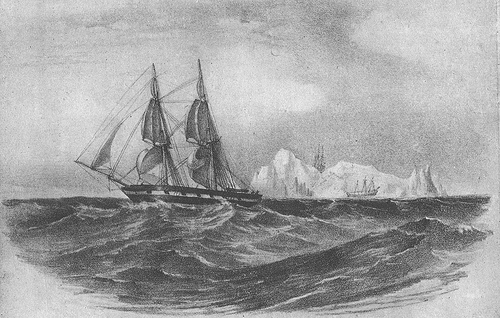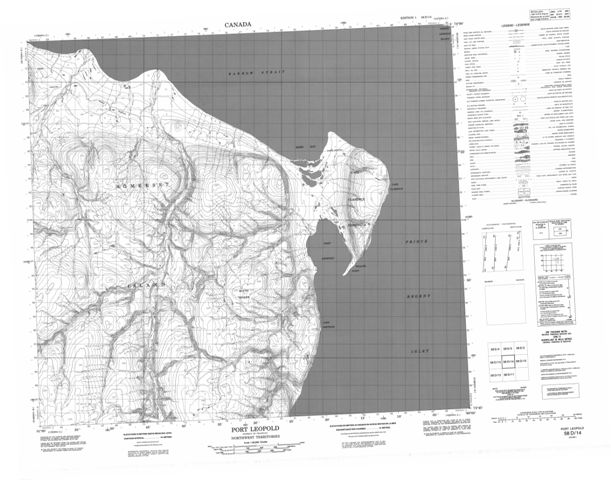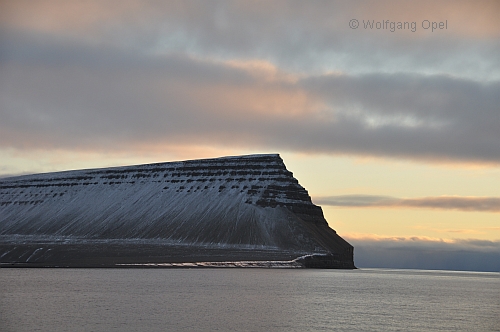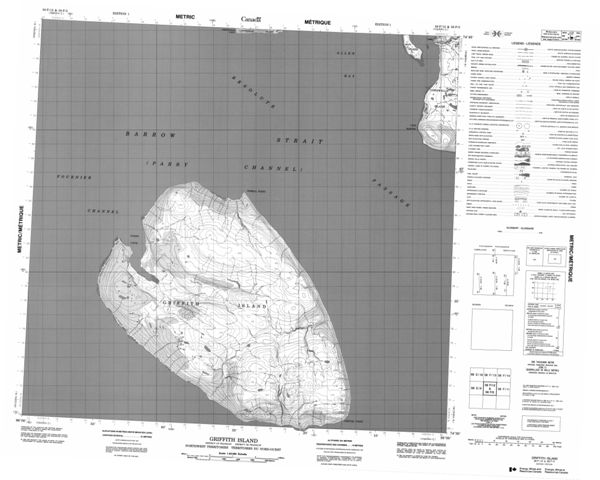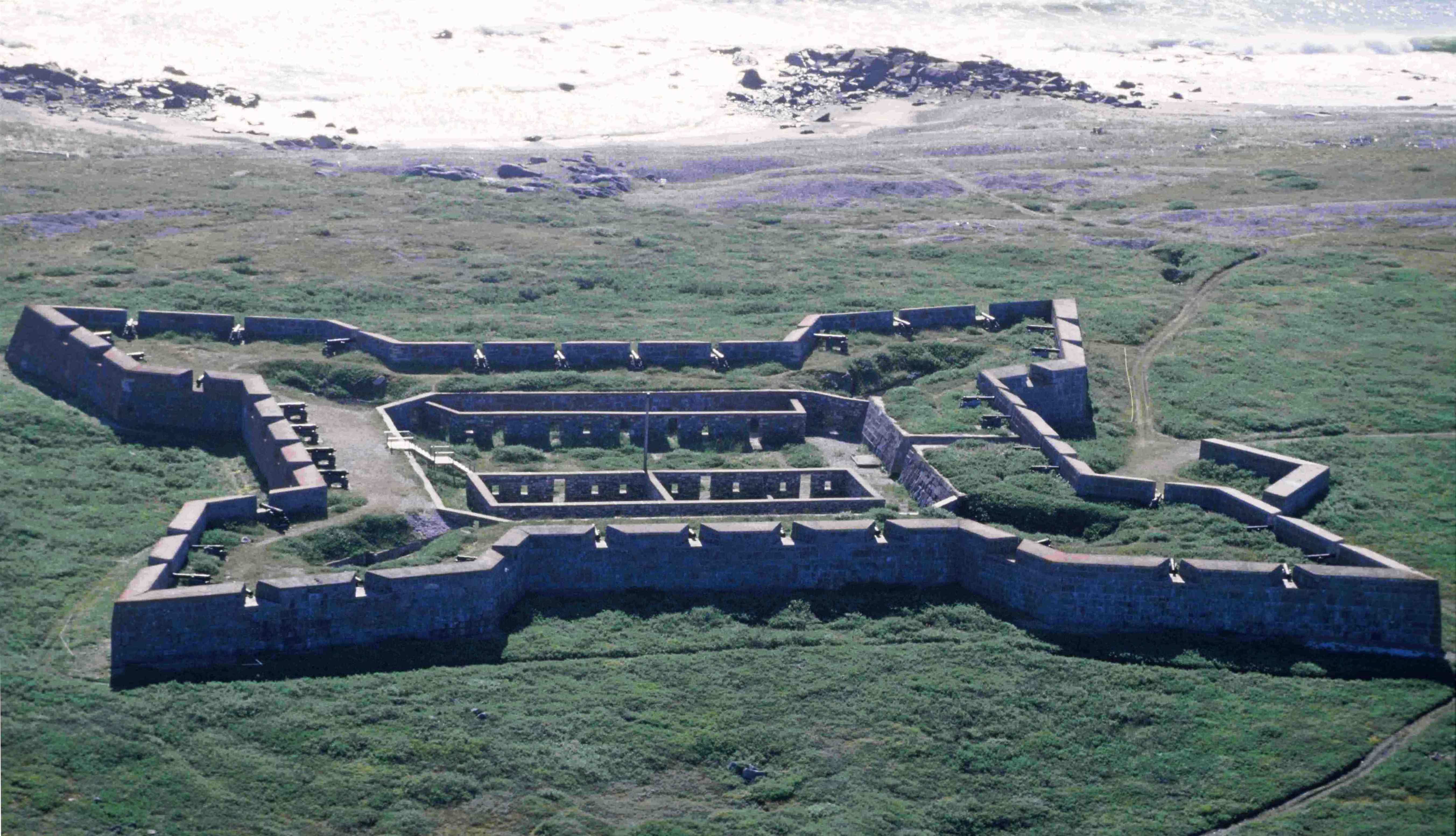Rescue missions after Franklin filled not only the Arctic during the years after his dissapearance but newspapers and narratives of the time as well.
The short and sad story of one of the Captains which sailed voluntarily after Franklin appears in almost all Franklin related books in the form of not more than three or four pàragraphs, but his name is not as well known as the name of others and he didn´t hardly appear in newspapers nor shared any visible glory though he accomplished certain things.
All stories I have read tell more or less the same thing, that Robert Shedden, thirty years old by then (*), while staying in Hong Kong heard about Captain´s Kellet searching expedition which was launched by the Admiralty in 1849. He, on board his private Yacht the Nancy Dawson, volunteered to join the HMS Herald and HMS Plover in that eastern attempt to find the two Franklin´s ships. They were supposed to appear in the east side of the northwest passage in 1848 thing that we know now they didn´t.
(*) some sources say wrongly that he was 28
When in June 1849 HMS Herald arrived at Petrovpavlosk, in Kamchatka peninsula, its crew saw with surprise how in the harbour, among some American whaleships, there was a British Yacht of the Royal Thames Yacht club. What was doing that ship that far ?
Yes, what was doing Robert Shedden there has not being enterily clear to me till I read "The Frozen zone and its explorers" and other documents. Though a former Navy man, for that time, Robert had become a tradesman. He had departed from Leith at the end of 1848 with a ship well loaded with provisions.
Was his original intention joining the searching expeditions or was he in the middle of a trade trip which he delayed for a while? It seems that he was in the coast of China before resuming his travel towards Siberia. According with the book above mentioned and those other papers, he was in the course of a pleasure trip to circunnavigate the world though at the same time it seems that he had stated somehow his predisposition to join searching parties.
Both ships departed together on July 14 to join HMS Plover which was in Chamisso Island in Kotzebue Sound. From there, they sailed north beyond Point Hope, while sailing surrounded by bowhead whales and American whalers, to reach Wainwright inlet. Four years had elapsed since the Franklin expedition had departed and it was this place which the Admiralty thought it could be the farthest point the missing expedition could have reached.
From point Barrow on, waters were unknown. Previous expeditions (Dease and Simpson, Franklin himself, etc.) had assured that those waters were very shoal. Kellet then decided not to go on with his two ships. It was then when William Pullen, a lieutenant appointed to HMS Plover, was sent ahead with four boats and 25 men. His goal was reaching the mouth of the McKenzie river and return if possible before the winter fell over their heads. In case they couldn´t retreat to the ships they should ascend the McKenzie river towards any trading fort. It seems that Pullen already knew before departing, according with the amount of provisions they carried, that they weren´t going to be able to return to the ships on time.
Pullen had sailed within just 10 miles of Point Barrow when he was stopped by the ice. For his surprise they saw how Nancy Dawson came following them. Robert Shedden wasn´t under Kellet´s command and he decided to give it a try. A risky decission taken into account that his crew had been creating problems from the very beginning of the expedition. As his ship was substantially smaller than the heavy Navy ships, he culd manage to advance further than them. When Shedden reached the boats Pullen went on board the Nancy Dawson to meet Robert, opportunity of which his mates took advantage for strengthening relations with local women.
Ice broke and the four boats and ship resume their trip. They passed Point Barrow, and here comes one of the achievements accomplished by Robert Shedden. His ship was the first on rounding the point by ship. From this place he had to come back, in part because sea conditions and in part because he had to confront the beginning of a mutiny provoked by men who were aggressively reluctant to winter in the north. Surely his health condition didn´t help too much neither in the decission process. He left some stores on shore and sailed back west under a rain of threats provided by his crew. Things were so serious that HMS Plover had to held three men from Nancy Dawson under custody, in chains.
The brave Robert Shedden, sadly, was so sick of consumption that he died during their return journey the day 16th of november of 1849. He died three days after having reached Matzatlan, in the west coast of Mexico, despite the efforts made by the medical Navy officer. He was buried in a protestant cemetery leaving a widow. Robert was aware he was quite sick even when he decided to join the searching expedition. That decission speaks lots about his character. Perhaps that was the reason why he decided to join the searching, to perform some honorable achievement before departing to the other world. Likely we will never know. HMS Herald´s master, James Hill, was appointed by Kellet to drive Nancy Dawson back to England from Matzatlan.
But this, is the story which relate him with the Franklin expedition, and this is the story which surely made him famous, but, who was actually Robert Shedden? There is not too much written about him, there are no data available in Wikipedia nor in the Canadian Biographical Dictionary. I have been able only to gather some pieces of information here and there to rebuilt his story with the highest number of details I could find. The bigger number of details about his life comes from Mariner´s Mirror. Thanks Peter Carney for your support here!.
Robert Shedden was born in 1819, son of William Shedden of Wimpole street in Southsea. His father William, veteran of Napoleonic wars, was one of the partners of Haworth and Shedden, West India merchants. William died only a year after his son was born.
Robert had belonged previously to the Royal Navy before sailing after Franklin and left it as mate. He was a veteran of Chinesse wars where he was severely wounded. His last appointment was in the Victory. In 1841 he enroled as master of the merchant James Lyon and years after, in 1847, he bought the yacht Nancy Dawson, a schooner of 163 tons built by Camper of Gosport yard.
It seems that Rober Shedden was an exceptional good man, he assisted the four boats during the days they sailed eastward together and escorted the two which were sent back towards the Navy ships. Lieutenant Hooper called him "A noble hearted man" and he was not the only one who praised his attitude and kindness, examples of this appear in all accounts.
Only a geographical feature bears his name, Point Shedden. The place is located where he had landed to leave a caché of provisions for the Franklin expedition at the mouth of a small inlet called Refuge inlet, some miles south of Barrow point.
It seems that his premature departure provoked the making of several memorials. As I have read in the church of Weston Underwood in Buckinghamshire there was once a plaque which it seems it is no longer existing. But there is another memorial which still survives in St Mary´s church of Hardmead. As both towns are quite close, I tend to believe that there must be some sort of mistake about the location of the former and surely the only ever existing one must be the latter.
This one shows an intense inscription:
"WILHELMINA, THE BEREAVED MOTHER, ERECTS THIS MONUMENT TO THE MEMORY OF HER ONLY AND WELL BELOVED SON ROBERT SHEDDEN. HE BUILT AND FITTED OUT HIS R.T.C. SCHOONER YACHT, THE 'NANCY DAWSON,' AND IN THIS FRAIL BARK HE BRAVELY EXPLORED THE FROZEN OCEAN IN THE ARCTIC REGIONS, IN A DISINTERESTED SEARCH AFTER THE LONG MISSING SIR JOHN FRANKLIN, AND HIS GALLANT BAND IN VAIN, DISAPPOINTED IN HIS GENEROUS HOPE, AND WORN DOWN BY ANXIETY, AND SLEEPLESS WATCHING HE DROOPED AND DIED, AS HE WISHED ON THE DARK BLUE SEA. HE EXPIRED ON BOARD HIS YACHT, ON 16TH NOVEMBER 1849 AGED 30 YEARS. HIS NOBLE REMAINS ARE INTERRED NEAR THE WILD WAVES OF THE PACIFIC OCEAN, IN THE PROTESTANT BURIAL GROUND AT MAZATLAN. HIS PRECIOUS SOUL RESTS WITH HIS FATHER AND HIS GOD. RESURGAM'"
But those, or that, weren´t his only memorials. Without any doubt the most beautiful tribute to him was the one his aunt Margaret Robertson dedicated to him. She bought two fields in the council of Kelso to built a park named after her favourite nephew Robert the Shedden Park which still can be visited. Two cannons from Nancy Dawson were taken and placed to guard the keeper´s house door. Sadly they are no longer in its place. Will they be in some local museum? The only certain thing is that the building is in a deplorable condition, the roof has collapsed and there is a warning signal besides its front door which prevent people to get close.
All stories I have read tell more or less the same thing, that Robert Shedden, thirty years old by then (*), while staying in Hong Kong heard about Captain´s Kellet searching expedition which was launched by the Admiralty in 1849. He, on board his private Yacht the Nancy Dawson, volunteered to join the HMS Herald and HMS Plover in that eastern attempt to find the two Franklin´s ships. They were supposed to appear in the east side of the northwest passage in 1848 thing that we know now they didn´t.
(*) some sources say wrongly that he was 28
 |
| The Schooner Yacht Nancy Dawson http://prints.rmg.co.uk/art/508850/the-schooner-yacht-nancy-dawson |
When in June 1849 HMS Herald arrived at Petrovpavlosk, in Kamchatka peninsula, its crew saw with surprise how in the harbour, among some American whaleships, there was a British Yacht of the Royal Thames Yacht club. What was doing that ship that far ?
Yes, what was doing Robert Shedden there has not being enterily clear to me till I read "The Frozen zone and its explorers" and other documents. Though a former Navy man, for that time, Robert had become a tradesman. He had departed from Leith at the end of 1848 with a ship well loaded with provisions.
Was his original intention joining the searching expeditions or was he in the middle of a trade trip which he delayed for a while? It seems that he was in the coast of China before resuming his travel towards Siberia. According with the book above mentioned and those other papers, he was in the course of a pleasure trip to circunnavigate the world though at the same time it seems that he had stated somehow his predisposition to join searching parties.
Both ships departed together on July 14 to join HMS Plover which was in Chamisso Island in Kotzebue Sound. From there, they sailed north beyond Point Hope, while sailing surrounded by bowhead whales and American whalers, to reach Wainwright inlet. Four years had elapsed since the Franklin expedition had departed and it was this place which the Admiralty thought it could be the farthest point the missing expedition could have reached.
From point Barrow on, waters were unknown. Previous expeditions (Dease and Simpson, Franklin himself, etc.) had assured that those waters were very shoal. Kellet then decided not to go on with his two ships. It was then when William Pullen, a lieutenant appointed to HMS Plover, was sent ahead with four boats and 25 men. His goal was reaching the mouth of the McKenzie river and return if possible before the winter fell over their heads. In case they couldn´t retreat to the ships they should ascend the McKenzie river towards any trading fort. It seems that Pullen already knew before departing, according with the amount of provisions they carried, that they weren´t going to be able to return to the ships on time.
Pullen had sailed within just 10 miles of Point Barrow when he was stopped by the ice. For his surprise they saw how Nancy Dawson came following them. Robert Shedden wasn´t under Kellet´s command and he decided to give it a try. A risky decission taken into account that his crew had been creating problems from the very beginning of the expedition. As his ship was substantially smaller than the heavy Navy ships, he culd manage to advance further than them. When Shedden reached the boats Pullen went on board the Nancy Dawson to meet Robert, opportunity of which his mates took advantage for strengthening relations with local women.
Ice broke and the four boats and ship resume their trip. They passed Point Barrow, and here comes one of the achievements accomplished by Robert Shedden. His ship was the first on rounding the point by ship. From this place he had to come back, in part because sea conditions and in part because he had to confront the beginning of a mutiny provoked by men who were aggressively reluctant to winter in the north. Surely his health condition didn´t help too much neither in the decission process. He left some stores on shore and sailed back west under a rain of threats provided by his crew. Things were so serious that HMS Plover had to held three men from Nancy Dawson under custody, in chains.
The brave Robert Shedden, sadly, was so sick of consumption that he died during their return journey the day 16th of november of 1849. He died three days after having reached Matzatlan, in the west coast of Mexico, despite the efforts made by the medical Navy officer. He was buried in a protestant cemetery leaving a widow. Robert was aware he was quite sick even when he decided to join the searching expedition. That decission speaks lots about his character. Perhaps that was the reason why he decided to join the searching, to perform some honorable achievement before departing to the other world. Likely we will never know. HMS Herald´s master, James Hill, was appointed by Kellet to drive Nancy Dawson back to England from Matzatlan.
Robert Shedden was born in 1819, son of William Shedden of Wimpole street in Southsea. His father William, veteran of Napoleonic wars, was one of the partners of Haworth and Shedden, West India merchants. William died only a year after his son was born.
Robert had belonged previously to the Royal Navy before sailing after Franklin and left it as mate. He was a veteran of Chinesse wars where he was severely wounded. His last appointment was in the Victory. In 1841 he enroled as master of the merchant James Lyon and years after, in 1847, he bought the yacht Nancy Dawson, a schooner of 163 tons built by Camper of Gosport yard.
It seems that Rober Shedden was an exceptional good man, he assisted the four boats during the days they sailed eastward together and escorted the two which were sent back towards the Navy ships. Lieutenant Hooper called him "A noble hearted man" and he was not the only one who praised his attitude and kindness, examples of this appear in all accounts.
Only a geographical feature bears his name, Point Shedden. The place is located where he had landed to leave a caché of provisions for the Franklin expedition at the mouth of a small inlet called Refuge inlet, some miles south of Barrow point.
 |
| Point Shedden http://mapcarta.com/24093432/Gallery |
This one shows an intense inscription:
"WILHELMINA, THE BEREAVED MOTHER, ERECTS THIS MONUMENT TO THE MEMORY OF HER ONLY AND WELL BELOVED SON ROBERT SHEDDEN. HE BUILT AND FITTED OUT HIS R.T.C. SCHOONER YACHT, THE 'NANCY DAWSON,' AND IN THIS FRAIL BARK HE BRAVELY EXPLORED THE FROZEN OCEAN IN THE ARCTIC REGIONS, IN A DISINTERESTED SEARCH AFTER THE LONG MISSING SIR JOHN FRANKLIN, AND HIS GALLANT BAND IN VAIN, DISAPPOINTED IN HIS GENEROUS HOPE, AND WORN DOWN BY ANXIETY, AND SLEEPLESS WATCHING HE DROOPED AND DIED, AS HE WISHED ON THE DARK BLUE SEA. HE EXPIRED ON BOARD HIS YACHT, ON 16TH NOVEMBER 1849 AGED 30 YEARS. HIS NOBLE REMAINS ARE INTERRED NEAR THE WILD WAVES OF THE PACIFIC OCEAN, IN THE PROTESTANT BURIAL GROUND AT MAZATLAN. HIS PRECIOUS SOUL RESTS WITH HIS FATHER AND HIS GOD. RESURGAM'"
 |
http://www.friendsoffriendlesschurches.org.uk/CMSMS/index.php?page=hardmead |
 |
| Keeper´s lodge http://www.geograph.org.uk/photo/1886919 |
 |
| Shedden park gate http://www.kelso.bordernet.co.uk/history/images/12.html |
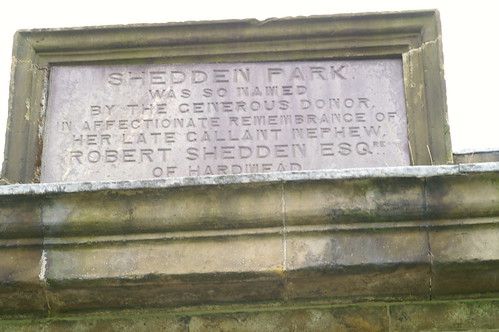 |
| Picture by Nikk Watt´s http://www.flickriver.com/photos/tags/sheddenpark/interesting/ |
I thought at the beginning that perhaps people from Kelso surely would be unaware of the origins of the name of the park and the reason for his construction, but to my surprise I have found that in an astounding and at the same time beautiful homage, people from Kelso built this original playground not to many years ago:
Kelso cuncil received a lottery grant with which they decided to build this playground ship in 2011. The shape of the ship imitates the original ship and details were copied from the only known picture of it to be incorporated to its design. There are panels at its sides which helps to follow the expedition performed by the ship and there are a compass and a weather game too. Who knows how many future generations of explorers this playground will turn up among the little children who are playing and will play in it ...
To end with the number of memorials Robert Shedden inspired, I would like to end with this rare pictura. It exists only a single painting of the ship which you can admire in the National Maritime Museum website, that´s true, but it exists also a litograph based in that painting.
Its inscription in the top part of the painting which is sold for only 1.500 $ reads the following:
"Presented as a mark of esteem to Dr Francis Douglas MD from Mrs Robertson of Ednam House, in mournful remembrance of her beloved nephew 'The Philanthropic Shedden', who died on board his yacht in his generous search for Sir John Franklin and his [indecipherable] Companions!! Most deeply lamented!!'."
"Most deeply lamented", indeed. Said not only for one but for many. It seems that we are in front of a big lost, the lost of a philanthropic man, as the inscription above says, who could have done many things in favour of his society if he had had the opportunity of doing so. His soul left such print in the memory of his loved ones that it still last till these days in the shape of an original and lovely playground ship which is inmerse in the waves of the innocent laughs of the children who nowadays play there. A playground ship which proudly bears the name of the first yacht which gave a tour all over the world and which sails are everyday filled by the gusts of imagination of those little kids which take its steer wheel. What better homage could he and his ship have deserved?
 |
| Nancy Dawson, bespoke Galleon, Shedden Park, Kelso http://www.externalworksindex.co.uk/entry/112584/Setter-Play/Bespoke-commemorative-play-ship-Shedden-Park-Kelso/ |
To end with the number of memorials Robert Shedden inspired, I would like to end with this rare pictura. It exists only a single painting of the ship which you can admire in the National Maritime Museum website, that´s true, but it exists also a litograph based in that painting.
 |
| Tnthed litograph based on the only known painting of Nancy Dawson |
"Presented as a mark of esteem to Dr Francis Douglas MD from Mrs Robertson of Ednam House, in mournful remembrance of her beloved nephew 'The Philanthropic Shedden', who died on board his yacht in his generous search for Sir John Franklin and his [indecipherable] Companions!! Most deeply lamented!!'."
"Most deeply lamented", indeed. Said not only for one but for many. It seems that we are in front of a big lost, the lost of a philanthropic man, as the inscription above says, who could have done many things in favour of his society if he had had the opportunity of doing so. His soul left such print in the memory of his loved ones that it still last till these days in the shape of an original and lovely playground ship which is inmerse in the waves of the innocent laughs of the children who nowadays play there. A playground ship which proudly bears the name of the first yacht which gave a tour all over the world and which sails are everyday filled by the gusts of imagination of those little kids which take its steer wheel. What better homage could he and his ship have deserved?
Thanks to Peter Carney for his unconditional support and to Jonhatan Dore and Regina Koellner too for his goodwill.
Sources:
- Furs and Frontiers In the Far North
- The Marine´s Mirror Volumen 44, Issue 2, 1958
- The Frozen zone and its explorers
- Arctic Hell ship
- Maitland Mercury and Hunter River General Advertiser (NSW : 1843 - 1893)
- http://www.british-history.ac.uk/vch/bucks/vol4/pp362-366
- https://www.ucl.ac.uk/lbs/person/view/1267713393
- https://www.ucl.ac.uk/lbs/person/view/621057214
- http://blogs.rmg.co.uk/memorials/m2493/
- Furs and Frontiers In the Far North
- The Marine´s Mirror Volumen 44, Issue 2, 1958
- The Frozen zone and its explorers
- Arctic Hell ship
- Maitland Mercury and Hunter River General Advertiser (NSW : 1843 - 1893)
- http://www.british-history.ac.uk/vch/bucks/vol4/pp362-366
- https://www.ucl.ac.uk/lbs/person/view/1267713393
- https://www.ucl.ac.uk/lbs/person/view/621057214
- http://blogs.rmg.co.uk/memorials/m2493/






